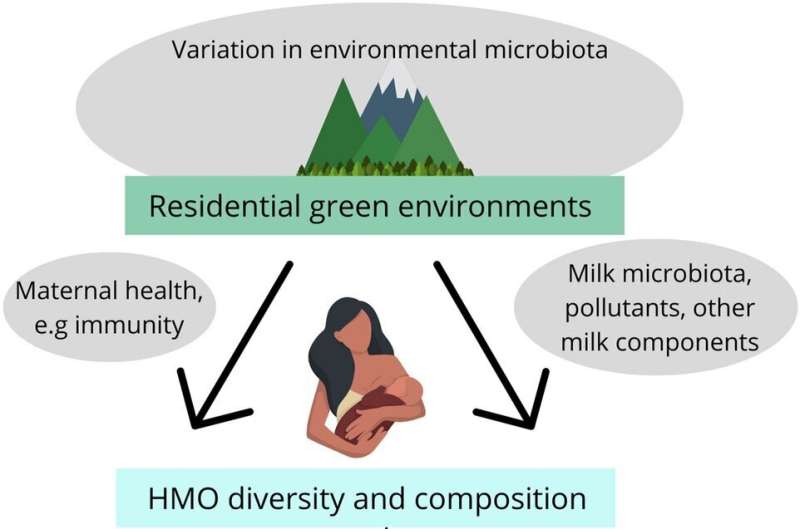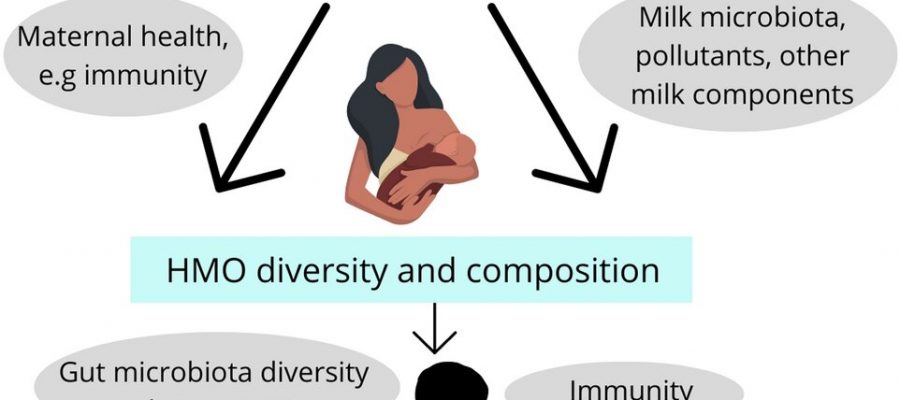
Living in a greener environment has an impact on the composition of oligosaccharides in mother’s breastmilk, which in turn may affect the infant’s health. A study conducted at the University of Turku showed that greater diversity and proportion of green environments in the residential area were associated with increased diversity in the composition of the oligosaccharides in breastmilk.
The paper is published in the journal Scientific Reports.
The research, conducted at the Departments of Biology and Public Health at University of Turku, examined the association between the residential green environment and the individual oligosaccharide profile in the mother’s breastmilk. Oligosaccharides are sugar molecules that are the most common component in breastmilk after lactose and fat. So far, approximately 200 oligosaccharides have been discovered and they form a very versatile group of different kinds of complex structures.
The oligosaccharides in breastmilk can protect the infant from harmful microbes and reduce the risk of developing allergies and diseases. The oligosaccharides are also closely connected to the immune system and gut microbiota which also have an impact the infant’s health.
“Earlier studies have shown that genetic and biological factors, such as mother’s obesity, can change the oligosaccharide composition in breastmilk. Our aim was to study how green living environments affect the composition of oligosaccharides in breastmilk, as greener environments have been found to have a beneficial impact on immunity and reduce the risk of disease in children,” says Docent Mirkka Lahdenperä from the Department of Biology at the University of Turku.
Closer connection to nature may affect child’s health via breastmilk
Approximately 800 mothers participated in the longitudinal follow-up study, the STEPS Study, that started at the University of Turku in 2007. The breastmilk samples were collected when the infants were three months old, after which the oligosaccharide composition was analyzed at the Bode Lab at the University of California San Diego.
The residential green environments were measured at the time the child was born around the homes of the families with measures of greenness, diversity of vegetation, and naturalness index, i.e., how much human impact and intervention there has been in the residential area. The results were independent of the education level, occupation, marital status and health of the children’s parents as well as the socio-economic disadvantage in the residential area.
The study showed that the diversity of oligosaccharides increases and the composition of several individual oligosaccharides changes when the mother’s residential area includes more green environments.
“This could indicate that increased everyday contacts with nature could be beneficial for breastfeeding mothers and their children as the oligosaccharide composition of breastmilk would become more diverse. The results imply that breastfeeding could have a mediating role between residential green environments and health in infancy,” says Lahdenperä and continues:
“The results highlight the importance of understanding the biological pathways that can impact health and lead to the development of different diseases starting from infancy.”
More information:
Mirkka Lahdenperä et al, Residential green environments are associated with human milk oligosaccharide diversity and composition, Scientific Reports (2023). DOI: 10.1038/s41598-022-27317-1
Journal information:
Scientific Reports
Source: Read Full Article
